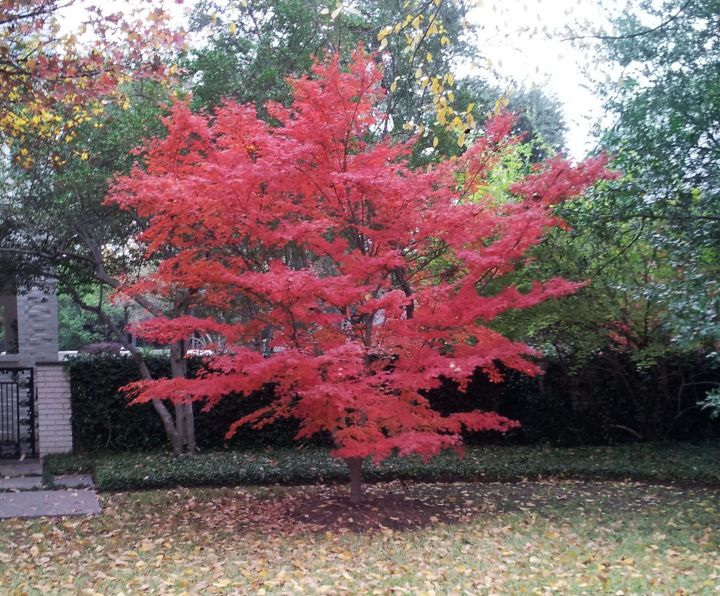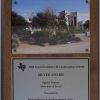Fall Tree Color: How to Get Great Fall Color
October 16, 2018 | By webadmin
Have you ever wondered about the how and why your tree’s foliage changes color in the fall? While trees are already showing off their fall foliage around the country, here in North Texas, we’ll have to wait a little longer for our fall foliage show. Here, we break down how your trees’ foliage turns color, and what weather will give you the best fall color show:

The Science of Fall Color
You might remember from 7th grade biology class that chlorophyll is the pigment used in photosynthesis that gives leaves their green color. What you may not know is there are other pigments always present in leaves: these other pigments are called carotenoids and anthocyanins.
Carotenoids provide the yellow and orange shades in tree leaves, while anthocyanins provide purple and red colors. As day length shortens in the fall, chlorophyll concentrations decline in the leaves (due to a layer of cells called the abscission layer that blocks the chlorophyll), leaving the other pigments more visible to the human eye.
__full-width.jpg)
Certain trees will have higher levels of these colorful pigments than others. The beautiful aspens seen in Colorado obviously have more carotenoids (yellow pigment), while Japanese maples have higher levels of anthocyanins (red pigment).
Why are some years more colorful than others?
You may have noticed that some fall seasons here in Texas fall short of any color. Other years, we get a fantastic fall foliage show. So what gives?
For bright fall foliage color, the weather throughout the year must be favorable. The most favorable conditions for a colorful fall include:
Sunny days: Days with lots of sunlight allow more carotenoids to show through as chlorophyll is dwindling in leaves.
Cool Night temperatures: Cool temperatures at night– but still well above freezing - help to develop more anthocyanins in the leaves.
Optimal rainfall: Well-timed rains in the spring & summer help to produce better color. Stressed trees never show the best fall color.
Calm days: Excess wind causes the leaves to drop before they reach their peak color. Calm winds help us enjoy fall leaves for a longer period of time. We know this is never a guarantee here in windy DFW!
What causes poor fall color?
Frost: An early color snap kills off leaves and stops the color change in its tracks.
Heat: Late fall heat can a delay fall foliage color by a few weeks.
Drought: Drought causes a delay in fall foliage color also - which means a hard freeze might occur before leaves can change color.
__full-width.jpg)
Make Good Tree Choices
In order to capture the best fall color that North Texas has to offer, we recommend planting some of the following of our favorite colorful trees. As always, make sure to plant the right tree in the right place –take into account sun exposure, location, and final size.
Our top ten list includes:
- Bald Cypress
- Big Tooth Maple
- Cedar Elm
- Chinese Pistache
- Crape Myrtle
- Ginkgo
- Japanese Maple
- Rusty Blackhaw Viburnum
- Shantung Maple
- Shumard Red Oak
And remember: fall is the BEST time for planting. Now is a great time to establish new trees and large shrubs.
